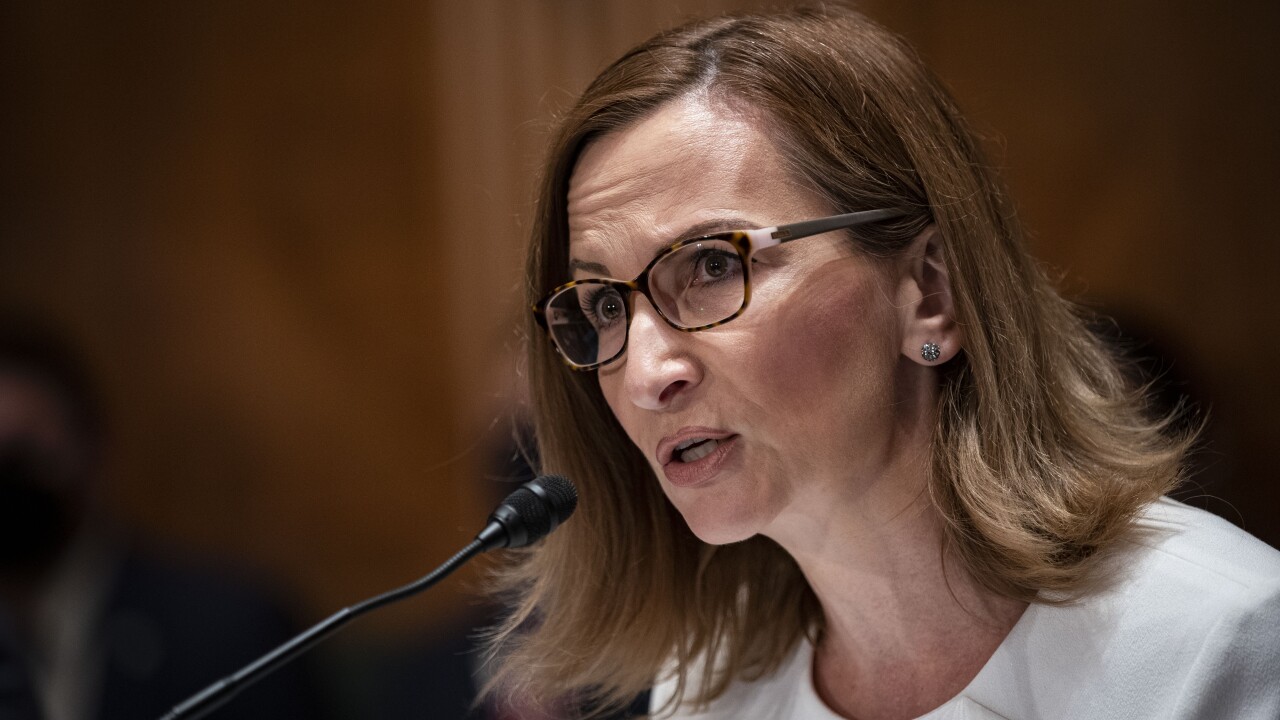CHARLOTTE - A year into the megamerger that created the new Wachovia Corp., chief executive G. Kennedy Thompson is feeling comfortable enough to talk about revenues.
First Union Corp.'s purchase of the old Wachovia has been one of the more closely watched deals in the industry's recent history. At the outset executives stressed that they would move slowly and learn from the mistakes the two North Carolina companies had made in previous acquisitions.
Now observers say that conservative approach is paying off. And Mr. Thompson says a new cross-sales program alone could bring in $500 million by 2007.
"In our merger projections, we had zero incremental revenues coming from the merger, and we think we're already seeing evidence of significant opportunities created by the combination of these two companies," the CEO said in a presentation last Wednesday at Merrill Lynch & Co.'s investor conference in New York.
Those new revenues will come from cross-selling and from adopting the former rivals' best products, services, and sales practices, Mr. Thompson said.
The $14 billion deal closed Sept. 1 of last year. Executives had said in April, when it was announced, that they would spend three years on integration, and Mr. Thompson said last week that the integration was on schedule.
"We are highly confident that this merger will be concluded on time, on budget, and with minimal customer impact," he said.
Wachovia expects to save $490 million this year, against $890 million a year projected when the merger was announced. Through June 30 it had eliminated 3,228 jobs, or 46% of its goal.
Mr. Thompson last week outlined areas where the company is anticipating growth:
o Up to $500 million in new annual revenues are possible within five years from the program to boost cross-sales to wealthy customers, the CEO said. The Wealth Client Partnership is being tested in Charlotte and Jacksonville, Fla., and is slated to roll out across Wachovia's East Coast banking network in the next few years.
Teams from the retail bank, and wealth management, capital management, and corporate and investment banking divisions reevaluate customer relationships and exchange leads. That could include assigning some retail banking customers to private bankers and encouraging executives of the bank's corporate customers into establishing personal banking relationships.
o Another $90 million in new revenues a year are expected by 2005 from applying the old Wachovia's small-business banking model in First Union branches. The company will assign one small-business specialist to every six branches, devoting more attention to the "very low end" of the small-business spectrum. David Pope, the co-head of retail banking for Wachovia, said in an interview that First Union had not targeted this segment much.
o A sizable lift - the company would not be specific - is expected from the implementation of First Union's more aggressive consumer credit sales model in legacy Wachovia branches; that is to get under way next quarter. First Union branches currently sell triple the dollar volume of consumer loans sold in Wachovia branches, Mr. Thompson said.
The changes are all part of a Wachovia strategy designed to give it a bigger wallet share among its eight million retail and 900,000 corporate customers, the CEO said. It aims to get more "sweet spot" customers - those who "invest, transact, and borrow with us," he said. These customers make up about 26% of the overall customer base - compared with 20% at First Union three years ago - and generate a profit of $852 a year on average, versus $392 a year for other customers, he said.
If it is to achieve those goals Wachovia first must successfully consolidate its branch networks up the East Coast, a project set to begin in Florida in November.
So far its careful planning and measured pace have helped the merger proceed without major hitches. Forty percent of systems have been converted, and the brokerage, personal trust, mutual fund and investment banking operations have been consolidated.
Lehman Brothers analyst Jason Goldberg said Wachovia's gradual integration might prove effective.
"When mergers of equals work, they tend to work well. The issue is that we've seen so few of them actually be successful," he said. "To the extent that they do integrate it properly, they are not looking for big cost savings, and they should be able to get better revenue going forward.
Wachovia has given itself a bit of a head start in the key area of branch deposits. Here again it is going a step at a time instead of converting all the branch systems, products, and signage in one fell swoop.
Not long after the merger, customers of both banks gained free access to the pair's ATMs. In July all the legacy Wachovia branches converted to First Union's consumer loan origination systems, and in August the entire bank converted to a single set of deposit products.
"We believe that this first year has been a tremendous year of progress," Mr. Thompson said, "and we think that in spite of pretty dreadful markets over that time that we are a company with significant, growing momentum."
Meanwhile, Wachovia's dealmaking continues. Last Wednesday it announced it had completed its purchase of the Charlotte insurance agency Cameron M. Harris & Co., an addition that it expects will boost Wachovia's insurance revenues to $150 million by yearend and make it one of the nation's top 15 insurance brokers. And it began this business week by announcing it had agreed to buy certain assets of E-Risk Services LLC, a Flanders, N.J., provider of management liability insurance products for privately held organizations.
Besides being the No. 1 East Coast bank by deposits, Mr. Thompson noted, Wachovia is the No. 5 broker-dealer, with client assets of $260 billion; No. 2 in both personal trust and treasury services for businesses; and a leading M&A adviser and capital markets underwriter, especially among midsize businesses.
Said Mr. Goldberg: "They're one of the dominant East Coast banks. They took First Union's distribution platform and combined products from the First Union and Wachovia sides, and are a top player in almost every business they compete in."





